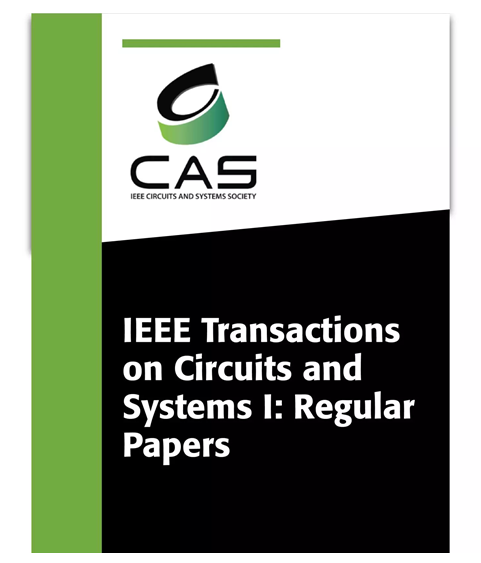Efficient Design and Implementation of Scale-Free CORDIC With Mutually Exclusive Micro-Rotations
IF 5.2
1区 工程技术
Q1 ENGINEERING, ELECTRICAL & ELECTRONIC
IEEE Transactions on Circuits and Systems I: Regular Papers
Pub Date : 2025-03-20
DOI:10.1109/TCSI.2025.3549974
引用次数: 0
Abstract
In this paper, a new approach to the design of a micro-rotation set for scale-free CORDIC is proposed. The sine and cosine functions of all the micro-rotation angles are realized by a simple shift or a shift-add operations which significantly reduces the hardware complexity. Besides, the micro-rotation set (except the first one) is designed to form mutually exclusive pairs. As a result of mutually exclusive micro-rotations, it is possible to reduce the required number of iterations to almost half for a given precision. Apart from that, the latency, as well as, the hardware complexity are also significantly reduced. A 9-bit fractional accuracy is obtained with just 5 iterations as against 13 iterations required by the conventional CORDIC. Suitable threshold angles are proposed to decide, using low-complexity comparators, whether a micro-rotation should be executed in a given iteration or can be skipped. The proposed circuits to determine the rotation conditions for different iterations involve either 2-bit or 3-bit comparators. The CORDIC circuit based on the proposed set of micro-rotations is shown to converge for any given angle of rotation. Furthermore, the proposed design involves significantly less logic, computation time, and latency than the best of the scale-free CORDIC circuits. When implemented on Xilinx FPGA (Field Programmable Gate Arrays), it requires 20% less area, offers higher operating frequency, and saves close to 19% power and 20% energy per computation over the latter.具有互斥微旋转的无标度CORDIC的高效设计与实现
本文提出了一种设计无标度CORDIC微旋转集的新方法。所有微转角的正弦和余弦函数都是通过简单的移位或移位加运算来实现的,大大降低了硬件复杂度。此外,微旋转集(除了第一个)被设计成互斥对。由于相互排斥的微旋转,对于给定的精度,可以将所需的迭代次数减少到几乎一半。除此之外,延迟和硬件复杂性也大大降低了。只需5次迭代即可获得9位小数精度,而传统的CORDIC需要13次迭代。提出了合适的阈值角度,使用低复杂度比较器来决定是否应该在给定迭代中执行微旋转或可以跳过微旋转。所提出的用于确定不同迭代的旋转条件的电路涉及2位或3位比较器。基于所提出的微旋转集的CORDIC电路对于任意给定的旋转角度都是收敛的。此外,与最好的无标度CORDIC电路相比,所提出的设计涉及的逻辑、计算时间和延迟显著减少。当在Xilinx FPGA(现场可编程门阵列)上实现时,它需要的面积减少20%,提供更高的工作频率,并且比后者节省近19%的功率和每次计算节省20%的能量。
本文章由计算机程序翻译,如有差异,请以英文原文为准。
求助全文
约1分钟内获得全文
求助全文
来源期刊
CiteScore
9.80
自引率
11.80%
发文量
441
审稿时长
2 months
期刊介绍:
TCAS I publishes regular papers in the field specified by the theory, analysis, design, and practical implementations of circuits, and the application of circuit techniques to systems and to signal processing. Included is the whole spectrum from basic scientific theory to industrial applications. The field of interest covered includes: - Circuits: Analog, Digital and Mixed Signal Circuits and Systems - Nonlinear Circuits and Systems, Integrated Sensors, MEMS and Systems on Chip, Nanoscale Circuits and Systems, Optoelectronic - Circuits and Systems, Power Electronics and Systems - Software for Analog-and-Logic Circuits and Systems - Control aspects of Circuits and Systems.

 求助内容:
求助内容: 应助结果提醒方式:
应助结果提醒方式:


